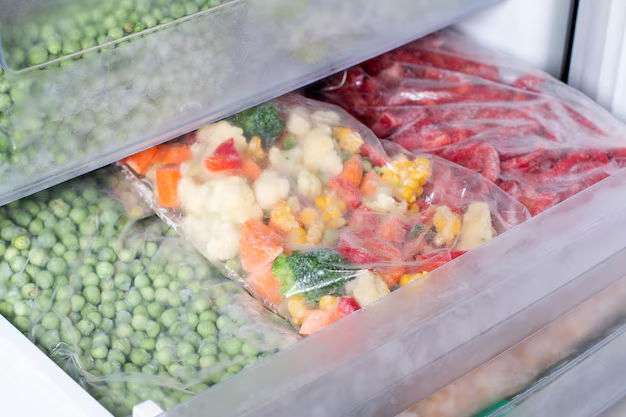How Long Do Your Leftovers Really Last in the Fridge?
Imagine this: after a delicious meal, you are left with a myriad of leftovers. As you pack them neatly in your refrigerator, a question looms over you—how long can these leftovers safely sit there? Food waste is a significant issue, but so is food safety. Storing leftovers correctly can extend their freshness while keeping them safe to consume. Let's dive into the world of leftover storage and explore how to maximize the lifespan of your meals.
Understanding the Science of Leftovers
The Role of Microorganisms
At the core of food spoilage are microorganisms—bacteria, molds, and yeast—that thrive in the right conditions. When food is stored improperly, these microorganisms can multiply rapidly, leading to spoilage and potential foodborne illnesses. Refrigeration is a powerful tool in slowing these processes, providing a safer environment for your leftovers.
Temperature as a Safety Factor
Refrigeration slows down bacterial growth but doesn't completely stop it. The "danger zone" for bacterial growth is between 40°F (4°C) and 140°F (60°C). By keeping your refrigerator at or below 40°F (4°C), you reduce the risk of spoilage and illness.
General Guidelines for Leftover Storage
The Golden Rule: 3 to 4 Days
A commonly accepted timeframe for most leftovers is 3 to 4 days. This is a safe period within which you can consume your refrigerated leftovers without significant risk of contamination or spoilage.
Packaging Best Practices
- Use airtight containers: These help prevent moisture buildup and reduce exposure to air, slowing the growth of bacteria and mold.
- Label and date your leftovers: This helps you keep track of how long your food has been stored and avoid guessing games.
Different Foods, Different Lifespans
Meats and Poultry
Typically, cooked meats and poultry last 3-4 days in the fridge. This includes:
- Roasted or grilled chicken
- Cooked beef or pork dishes
- Meat-based sauces
Quick Tip:
Always reheat leftovers to 165°F (75°C) to ensure any potential bacteria are killed.
Seafood
Seafood, given its delicate nature, tends to spoil faster. Two days is often the limit for cooked seafood like fish or shellfish.
Dairy and Egg Dishes
Whether it's a cheesy lasagna or an egg-based casserole, aim to consume these within 3-4 days. The high moisture and protein content in these dishes make them prone to spoilage.
Grains and Pasta
Cooked grains, rice, and pasta generally keep well for 3-5 days. Be cautious with rice, as improperly stored cooked rice can harbor spores of Bacillus cereus, which can cause food poisoning.
Vegetables and Fruits
Cooked vegetables have a slightly longer fridge life, generally 3-7 days. However, fresh, uncooked fruits and vegetables vary widely in how long they'll last.
Storage Tip:
Some fruits and veggies do better stored outside of the fridge to ripen, like bananas and tomatoes. Once they’re ripe, move them to the fridge to extend freshness.
Frequently Overlooked Factors
Cross-Contamination Risks
Always use clean utensils and a different container when storing leftovers. Mixing old food with new can speed up spoilage.
Humidity and Moisture
Excess moisture accelerates spoilage. Line containers with paper towels to absorb extra moisture if necessary.
Signs Your Leftovers Have Gone Bad
Recognizing spoilage is crucial to avoid foodborne illnesses. Look out for:
- Unusual odors: If it smells off, it's safest to toss it.
- Color changes: A significant change in color might indicate contamination.
- Texture alteration: Slime or unexpected softness can be a spoilage indicator.
Environmentally Friendly Storage
Embrace Sustainability
Limiting food waste is not just about consumption but also about sustainable storage.
- Use glass containers: They are reusable, reduce plastic waste, and do not retain odors like some plastic counterparts.
- Compost scraps when possible: Even when leftovers go bad, you can lessen waste impact by composting.
Taking Safe Steps Beyond the Fridge
Can Freezing Extend Your Leftover’s Life?
Many cooked foods can extend their shelf life by freezing. While freezing generally stops bacteria growth, it’s essential to keep in mind that some foods do not freeze well—such as mayonnaise-based dishes or egg whites.
Freezing Best Practices:
- Label the containers with the date the food was frozen.
- Blanch vegetables before freezing to lock in nutrients and color.
Leveraging Leftovers Into New Dishes
Get creative and transform leftovers:
- Soups and Stews: A hodgepodge of various leftovers can make a hearty soup.
- Stir-fries: Combine leftover meats and vegetables with rice or noodles for a quick meal.
📝 Key Takeaways
- "3 to 4 days" is a good rule of thumb for most leftovers.
- Label and date your containers to track food freshness.
- Proper storage containers help reduce spoilage risk.
- Always reheat to a safe temperature of 165°F before consumption.
- Be vigilant for signs of spoilage such as smells, colors, and texture changes.
By implementing these guidelines, you can enjoy your meals safely while minimizing waste. Remember, when it comes to food safety, it's better to err on the side of caution. With thoughtful storage and a bit of creativity, your leftovers can transform into tomorrow's meal masterpieces.
